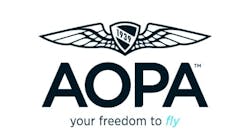The English Wheel
Some insight into using this sheet metal forming tool
By Joe Escobar
Sheet metal work is often considered an art. Many of us can fabricate basic metal repairs, but it takes a true artisan to create some of the complex shapes necessary for some repairs. English wheels are one of the tools he or she uses to create these works of art. The following excerpt from Ron and Sue Fournier's book Sheet Metal Handbook discusses the use of this important sheet metal forming tool.
Brief history
The recognition of the trade occurred circa 1900 when automotive parts
were made by hammering or "beating" them out of flat sheet metal. Panel beaters would shape parts over shot or sand bags, hollowed-out wooden forms and steel stakes. This involved a great deal of hard work, because each body part had to be very smooth. As the industry developed, the trade became highly skilled, organized, and respected.
The panel beaters adopted the European craftsmen system of skilled masters training apprentices over a period of usually five years to learn the trade and become journeymen. Only after years of experience, and after proving his ability to produce excellent quality complicated panels, could a journeyman then be considered a master panel beater.
As the auto industry progressed, the panel beaters developed and perfected their methods. As cars grew larger and competition for quality increased, so did the need to form large panels free of hammer marks and other flaws. This is the reasoning behind the invention of the English wheel.
Design and function
The English wheel can shape steel and aluminum smoothly and easily by pushing metal back and forth using only the strength of one or two workers. No electric, pneumatic, or hydraulic power is used.
The design is simple, with few moving parts. The base takes the form of a large "C," and is usually made of cast iron or fabricated steel. It is very sturdy and rigid.
The parts used to do the shaping are fastened at the open end of the frame. A flat-faced hardened steel wheel is bolted on at the top of the "C." This wheel is usually 6 to 9 inches in diameter and 3 inches wide. It has an axle and two strong roller bearings for smooth rolling.
The lower wheels, called anvils, also have axles and roller bearings. The big difference between the anvils and the upper wheel is that the anvils are smaller in diameter than upper wheels, and they have a curved surface. The anvils are mounted in a strong steel yoke which is moved vertically by turning a large steel knob located at the bottom of the machine. This knob is attached to a large screw. The yoke sits on top of this screw and moves up and down with it. The yoke has a quick release mechanism to remove the metal from the machine and return to the same pressure setting easily.
Using the English wheel
An English wheel works best when you follow certain rules of operation. If you work by the rules, you'll get good results. If not, you will have
problems. Remember, apprentices spent at least five years learning this trade. During much of those years they were learning how to use the English wheel.
Always start out with a slight amount of pressure against the metal, just enough so the metal won't skip or slip through the wheels. Too much pressure will produce roller marks and mar the metal. The first few passes of the metal panel through the wheel will show if the pressure setting is correct. There should be some shaping, but definitely no marring.
To begin, insert the metal panel into the wheel and adjust the yoke. Then, move the metal panel through the wheel in a gentle, smooth, back-and-forth motion, as you guide the panel laterally through the wheel to form the curve. How the metal is moved through the wheel is very important! Each pass of the metal through the wheel must be close enough to the previous one so they will overlap slightly. Otherwise, the metal will stretch unevenly, and the surface will be irregular. That means extra work.
The actual motion of moving the metal panel back-and-forth through the English wheel is called tracking. However, the panel must also be moved from right-to-left, or from left-to-right as well, without missing any section of metal. Each track must be parallel to the previous one. The wheels press the metal in a long line, and the idea is to move evenly so all of the metal is stretched evenly. Don't zigzag across the panel. This will cause waves instead of a smooth continuous curve. Tracking correctly takes a great deal of time and patience, so don't get discouraged if you fail the first time out.
If you want more shape on one side than the other, do more than one wheeling. Start out by wheeling short passes on the area you want to be curved more. Then go over the whole part and overlap the first wheeling.
Ron Fournier has over 35 years experience in sheet metal fabrication. His books Metal Fabricator's Handbook and Sheet Metal Handbook are distributed through US Industrial Tool & Supply Co. along with sheet metal fabrication tools and equipment. You can visit them online at www.ustool.com. Mr. Fournier offers hands-on English wheel workshops as well as metal fabrication videos and tools. For more information and class schedule visit www.FournierEnterprises.com.
__________
English Wheel Tips
- Practice tracking on scrap pieces of metal that are of the same alloy and thickness you intend to use most often. Start with small panels with a low crown at first, then move on to harder shapes as your skill increases.
- It is common for beginners to put too much pressure on the panel when first starting with the wheel. This produces long bumps in the metal instead of a curve. When using the wheel remember to gradually increase the pressure settings. Keep the pressure setting the same as passes are made. Increase pressure slightly only when the curve has been completely formed at one setting, or will no longer curve at that setting.
- Keep in mind the English wheel is primarily a stretching machine. You must be very careful not to over stretch the metal. Work slowly. Work up to the shape you want by gradual curving. Keep checking the shape with templates to see how the curve is coming along. Or use a station buck to check the curve, if you are working with one.
- There is one last caution you must observe. Avoid running the edge of the metal through the wheel. This will stretch the edge. A stretched edge will look bad and the part won't fit correctly. A stretched edge requires the extra work of shrinking it back to shape. Shrinking isn't easy.






